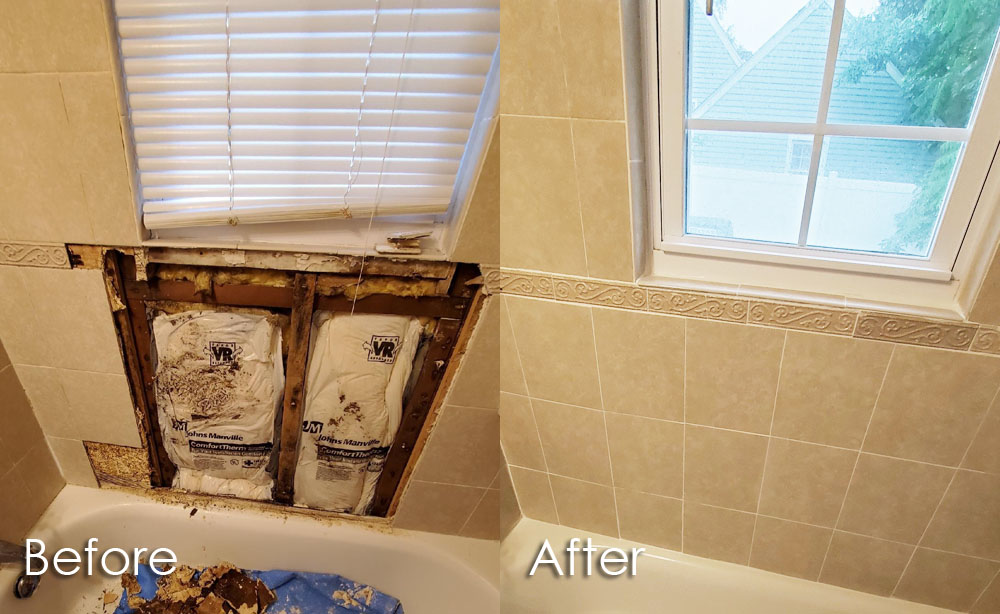The author is making a number of good points related to How to Prevent Bathroom Water Damage in general in this post directly below.

The restroom is extremely at risk for damp accumulation and also prospective water damage due to the constant use of water in it. This article supplies basic evaluation strategies to assist spotting water damages dangers.
The frequent use water in the restroom makes it extremely at risk for moist buildup as well as possible water damages. By inspecting it consistently, you can decrease water relevant damages.
The following collection of inspections is very easy to carry out and also ought to be done as soon as in every three months in order to maintain your shower room in good shape as well as to prevent prospective water damages triggered by the bathtub, the shower, pipe joints and also plumbing, sinks, cupboards, and also the bathroom
Do not forget carrying out these evaluations and also be comprehensive while executing them. Keep in mind that these basic inspections can conserve you a great deal of money by giving early indicators for water damage
Sinks as well as Cabinets
Sinks and also closets are exposed to wetness and also humidity everyday and also are frequently forgotten. Inspect frequently under the sink and also on the countertop over it. Fix any drip in the trap as it might suggest drain issues. Check out the sink, slow draining pipelines might indicate a blocked drainpipe. Change sink seals if they are cracked or loose.
Tub and Shower
The shower and also bathtub require special focus and also maintenance. Inspect the ceramic tiles and also replace if cracked. Ensure that there is no missing out on cement between the tiles. Examine as well as change fractured caulking at joints where the walls meet the floor or the tub. Obstructed drains pipes and pipes problems will stop the tub from drying out and may indicate major issues underneath the bath tub. Seek advice from a professional instantly to prevent structural damage. Focus on stainings or soft locations around the bath tub wall surfaces as they might suggest an inner leakage.
Plumbing
Signs for water damages are tough to identify given that most pipes are installed inside the walls.
Pay unique focus to floor covering and also wall surfaces dampness and also discolorations as they might show an unseen plumbing trouble. Inspect wetness degrees in adjacent spaces also.
The Bathroom
The bathroom is a susceptible water junction. Check the water lines and search for leakages around the commode seat, in the pipe, as well as under the water storage tank. If you discover any type of signs of moisture on the floor around the toilet, check for leaks in the toilet edge as well as storage tank seals.
Understand that hanging commode bowl antiperspirants boosts the possibilities for clogs.
Water Damage Signs In The Bathroom To Avoid Cleanup
Musty smell
This is one of the easiest signs to catch because musty smells are so odorous. The damp, earthy, moldy smell should be a big red flag. The smell will develop when moisture gets trapped in surfaces, and begins to facilitate mold growth. Leaking pipes under cabinets, inside walls, and behind shower fixtures will cause moisture to stay trapped and not dry, which will lead to mold growth and spread. As soon as you notice any musty smells in your bathroom, have it checked for hidden water damage and cleanup signs.
Visible mold
If the smell isn’t there to give it away, sometimes you will actually see mold growth. Finding mold in your bathroom is a serious problem, because mold is very harmful to your health. By the time mold growth is visible, it also means that water damage has already occurred and been present for some time. The only way the mold problem can be resolved is to find the source of the moisture and get it stopped. To safely and adequately remove mold, you need to have professionals handle the remediation. Do not waste any time in getting mold problems addressed, fixed, and sanitized so that you can protect you and your family from the many respiratory symptoms caused by mold exposure.
Damaged floors
Bathroom floors should be able to withstand some exposure to water while still remaining in good condition. However, when excess exposure or water leaks occur, they will begin to damage even the most water-resistant flooring. If you notice any cracking, bubbling, staining, or warping on your bathroom floors, there is probably a water leak somewhere causing the distortion. If you notice areas of the floor have become softer, or even have a spongy feeling, there is probably damage to the subfloor. Subflooring is typically made up of plywood. When plywood is exposed to water or moisture, it will absorb it. Once it has become saturated, the weight of the excess water will cause the wood to swell and soften. Check the floors in your bathroom frequently to catch any of these sings before they lead to damaged subflooring.
Changes on walls
When water leaks behind walls, it will cause changes in the drywall. Peeling plaster, blistering paint, and soggy wallpaper are all good indicators that excess water is building up behind the wall. Water leaking behind drywall will cause it to swell and be soft to the tough. If you start to notice gaps along the trim of your walls, or where tile meets the wall, it could also be a strong indicator that there is a leak behind the wall. Any changes, distortion, or damage on the walls should be evaluated as soon as you notice it to prevent further water damage and cleanup.

I stumbled upon that content about Looking for Signs of Water Damage in the Bathroom while doing a search on the internet. Liked our entry? Please share it. Let other people locate it. Thanks for your time. Visit again soon.
See Availability
Comments on “Exactly How to Help Prevent Water Damage in Your Bathroom”